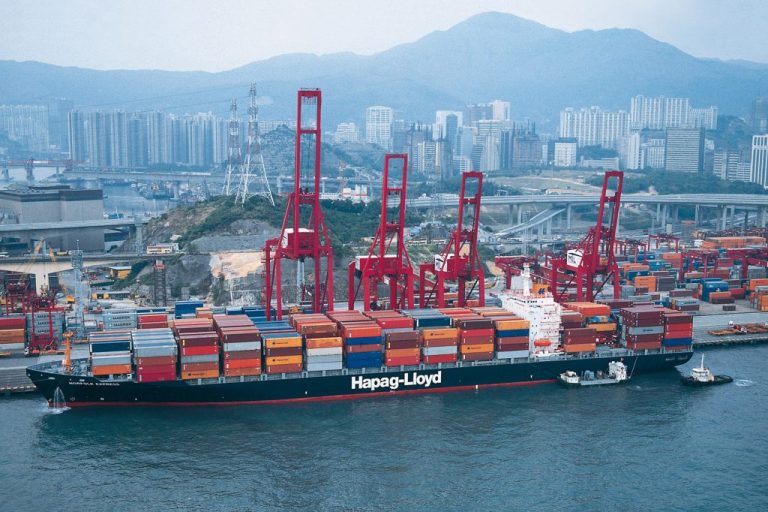October 21, 2020: Shippers facing the most “volatile” trading conditions in the history of container shipping have been warned to prepare for an “expensive world” of ocean transport in the upcoming round of long-term contract negotiations.
Shippers attending two virtual summits being hosted by tech startups, Xeneta and Flexport, were warned of a new normal where rates were set to stay high for a much longer period than the industry has experienced in its turbulent past.
Something has changed in the container shipping industry, seasoned analysts told delegates at Xeneta Summit 2020.
“It used to be that when carriers have money in their hands they are going to the yards;” said Patrik Berglund, Xeneta CEO. “I feel we’ve seen the end of that behaviour, I think the carriers have got used to making money and they will be more cautious. The way they balanced demand and supply at the start of the crisis so quickly was impressive. We have not seen that before.”
With spot rates on critical trade lanes, including the Asia-USWC trade at nearly US$4,000/FEU, shipping lines are on track to post record profits in 2020.
“All of this feels and looks different. I believe that we’re heading into a more expensive world of container rates for shippers,” said Berglund.
Berglund’s benchmarking tool, Xeneta, is pointing to a sharp rise in long-term contracts being signed in the last three months, and into Q4, indicating that shippers are facing a torrid time defending their budgets at board level in the build-up to Christmas.
Long-term rates on the Asia to West Coast South America trade were currently averaging at US$2,865/FEU, up 58% in the last three months, numbers that compare favourably (from a liner shipping perspective) to the trend being seen between Asia and the US west coast where long-term contract rates were up 64% to US$2,475/FEU.
These are still significantly lower than the spot rates being achieved on the same trade lanes, pointing to a difficult conversation between shippers and shipping lines in the new year.
Flexport’s Global Head of Ocean Freight, Nerijus Poskus, speaking at the Silicon Valley startup’s Forward20 annual conference said the balance of power was unlikely to shift for at least another six months.
“We actually believe that the peak will maybe extend all the way through Q4 and maybe through Q1 next year for two reasons,” said Poskus. “One, people continue to consume more than usual because of the shift from services to goods, and two, carriers’ willingness to manage capacity much more.”
Poskus added that with spot and fixed contracts showing a spread in pricing of as much as US$3,000 in some trade lanes, fixed-rate contracts were clearly becoming less attractive to shipping lines currently able to fill their ships with lucrative last-minute bookings online.
“My take is that fixed rates will not cease to exist but they will look very, very different,” said Poskus. “The typical 500TEU annual contract, 10TEU allotment on a weekly basis is going to go away. Demand is going to be more volatile and your supply is going to be managed much more tightly by the shipping lines, so the supply throughout the year will not be the same. When demand is low they will cut capacity, so how are you going to deal with blank sailings?”
Spot rates are “probably not sustainable for the long-term but they will remain very elevated,” he said. “Many companies should increase freight budgets for 2021.”
On the other side of the negotiating table, shippers continue to voice their frustration, not at liner profitability in a time of unprecedented uncertainty, but more as a consequence of what was described as an industry offering higher prices coupled with “reliability at an all-time low”.
Karen Goodall, regional category lead logistics procurement at Associated British Foods, said that she was not looking forward to the next round of long-term contract negotiations.
“Prices are going up and services are going down so I’m unwilling to get locked into long-term contracts,” she said. “We need to be able to adapt to short-term contracts depending on the trade lanes. In the 16 years I’ve been working in this market this is the most volatile that I’ve seen, I’m not sitting comfortably at the moment.”
Sanguine shippers preparing themselves for a more expensive year in 2021 are pushing back for greater value in return for signing up for long-term contracts.
“If we know what the service is then as a shipper we are prepared to pay for that,” said Goodall. “It’s when you have paid for a service but it’s not reliable that is when it’s something that we are unwilling to pay for.”
Shippers are expected to be offered more premium, on-demand services, and the option of extending the length of contract agreements.
“The key to this is to try to move somehow to a mechanism where we make contracts that are not just for 12 months but towards two to three years and with firmer commitments from the customers on how we deal with volume,” Hapag-Lloyd’s CEO, Rolf Habben Jansen told the Xeneta Summit.
“We haven’t figured out how to make a balanced commitment between both sides,” he said. “We’ve seen that when rates are low everybody wants to lock in long-term contracts and when rates are high everybody wants to go short. When rates drop and we have long-term contracts then people try to deviate away from contracts towards spot rates. The key is making contracts that are beyond two years and have a much clearer commitment on capacity from the carrier and also volume from the customer,” he said.
Source: Container News






